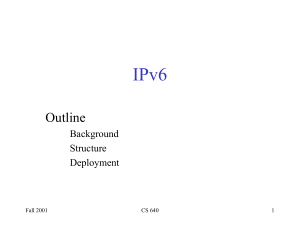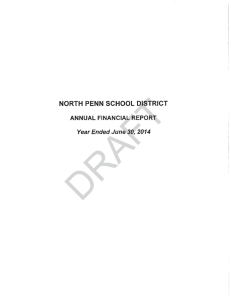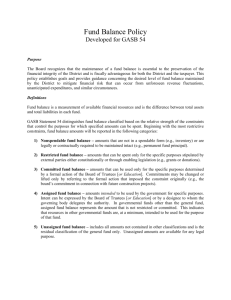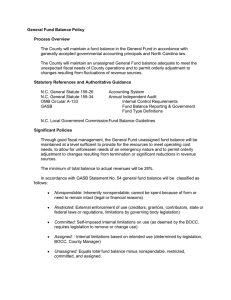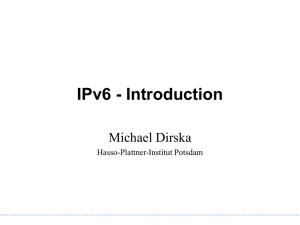IPv6 Outline Background Structure
advertisement
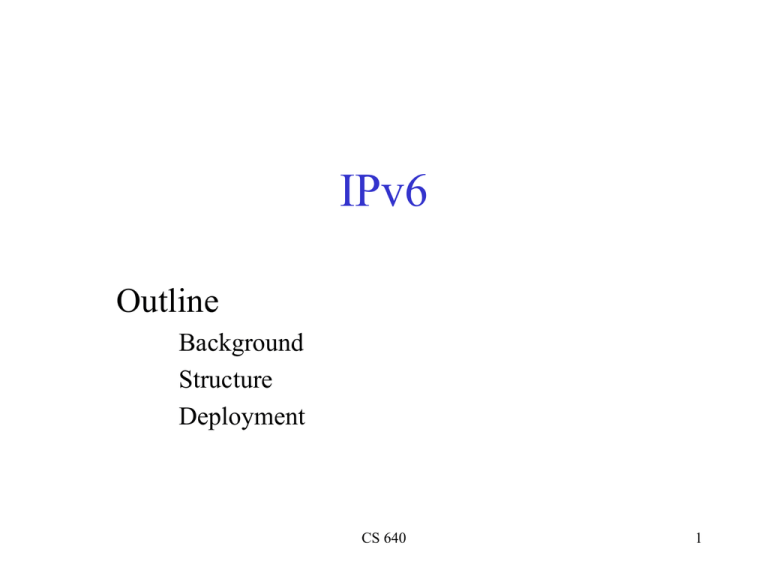
IPv6 Outline Background Structure Deployment CS 640 1 How many addresses in IPv4? • There are 232 (4.2 billion) unique IPv4 addresses • Some of these have special purposes – Localhost:127.0.0.0/8 – Local network: 10.0.0.0/8, 172.16.0.0/12, 192.168.0.0/16 • CIDR allows for allocating addresses efficiently • Issue of not enough addresses CS 640 2 IPv6 Background • IETF started effort to specify new version of IP in 1991 – New version would require change of header – Include all modifications in one new protocol • Solicitation of suggestions from community – Result was IPng which became IPv6 – First version completed in 1994 • Same architectural principles as IPv4 – only more addresses CS 640 3 IPv6 Planned Features • • • • 128-bit address space Real-time / Quality of Service (QoS) Security and authentication Auto-configuration – Hosts auto-config with IP address and domain name – Try to make systems more plug-n-play • • • • Enhanced routing functionality (eg. Mobile hosts) Multicast Protocol extensions Smooth transition path from IPv4 CS 640 4 Address Space • Allocation is classless • Prefixes specify use (unicast, multicast, anycast) – Unicast: send packets to single host – Multicast: send packets to all members of group – Anycast: send packets to nearest member of a group • Prefixes can be used to map v4 to v6 space and visaversa • Lots of addresses with 128 bits! – ~1500 address per square foot of the earth’s surface CS 640 5 Address Notation • Set of eight 16-bit values separated by colons – Eg. 47CD:1234:3200:0000:0000:4325:B792:0428 • Large number of zeros omitted with series of colons – Eg. 47CD:1234:3200::4325:B792:0428 • Address prefixes (slash notation) are the same as v4 – Eg. FEDC:BA98:7600::/40 describes a 40 bit prefix CS 640 6 Address Prefix Assignments 0000 0000 Reserved 0000 0001 Unassigned 0000 001 Reserved for NSAP (non-IP addresses used by ISO) 0000 010 Reserved for IPX (non-IP addresses used by IPX) 0000 011 Unassigned 0000 1 Unassigned 0001 Unassigned 001 Unicast Address Space 010 Unassigned 011 Unassigned 100 Unassigned 101 Unassigned 110 Unassigned 1110 Unassigned 1111 0 Unassigned 1111 10 Unassigned 1111 110 Unassigned 1111 1110 0 Unassigned 1111 1110 10 Link Local Use addresses 1111 1110 11 Site Local Use addresses 1111 1111 Multicast addresses CS 640 7 Unicast Assignment • Unicast address assignment is similar to CIDR – – – – Unicast addresses start with 001 Host interfaces belong to subnets Addresses composed of a subnet prefix and a host identifier Subnet prefix provides for aggregation into larger networks • Provider-based plan – – – – – Internet is global hierarchy of networks 3 levels – region, provider, subscriber Goal is to provide route aggregation to reduce BGP overhead Provider can advertise a single prefix for all of its subscribers Region = 13 bits, Provider = 24 bits, Subscriber = 16 bits, Host = 80 bits • Eg. 001,regionID,providerID,subscriberID,subnetID,intefaceID CS 640 8 Recall IPv4 Packet Format Details 0 4 V ersion 8 16 TOS HLen 31 Length Ident TTL 19 Flags Protocol Offset Checksum SourceAddr DestinationAddr Pad (variable) Options (variable) Data CS 640 9 IPv6 Packet Format 0 4 V ersion 8 16 24 31 Flow Label Traffic Class Payload Lengtht Next Header Hop Limit SourceAddr (4 words) DestinationAddr (4 words) Options (variable number) Data CS 640 10 Packet Format Details • • • • Simpler format than IPv4 Version = 6 Traffic class = IPv4 ToS Treat all packets with the same Flow Label equally – Support QoS and fair bandwidth allocation • Payload length does not include header – limits packets to 64KB – There is a “jumbogram option” • Hop limit = IPv4 TTL field • Next header combines options and protocol – If there are no options then NextHeader is the protocol field • Options are “extension header” that follow IP header – Eg. routing, fragmentation, authentication encryption… CS 640 11 Key differences in header • No checksum – Bit level errors are checked for all over the place • No length variability in header – Fixed format speeds processing • No more fragmentation and reassembly in header – Incorrectly sized packets are dropped and message is sent to sender to reduce packet size – Hosts should do path MTU discovery CS 640 12 Transition from v4 to v6 • Flag day is not feasible • Dual stack operation – v6 nodes run in both v4 and v6 modes and use version field to decide which stack to use – Nodes can be assigned a v4 compatible v6 address • Allows a host which supports v6 to talk v6 even if local routers only speak v4 • Signals the need for tunneling • Add 96 0’s (zero-extending) to a 32-bit v4 address – eg. ::10.0.0.1 – Nodes can be assigned a v4 mapped v6 address • Allows a host which supports both v6 and v4 to communicate with a v4 hosts • Add 2 bytes of 1’s to v4 address then zero-extend the rest – eg. ::ffff:10.0.0.1 • Tunneling is used to deal with networks where v4 router(s) sit between two v6 routers – Encapsulate v6 packets and all of their information in v4 packets until you hit the next v6 router CS 640 13 IPv6 Issues • • • • • • Address length: usable addresses vs. overhead Hop limit: is 65K necessary? Max. Pkt. Size: Larger BW calls for larger pkts. Is the checksum necessary? How do servers handle both types of packets? Is security necessary in IP? – How is it best implemented? CS 640 14
